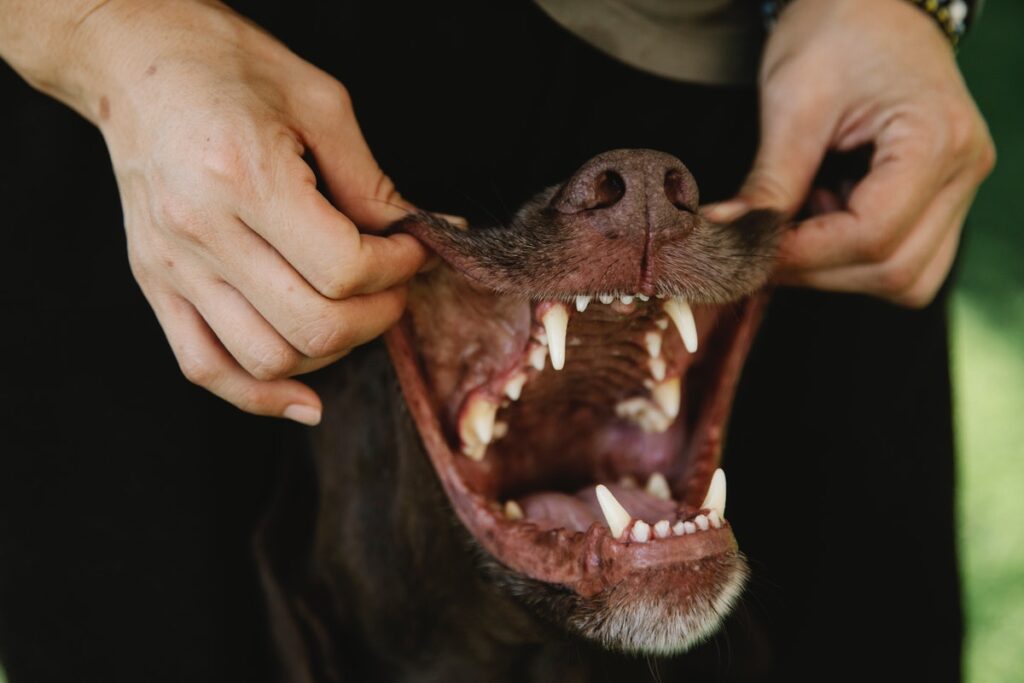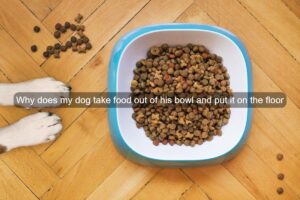Dogs occupy a special place in our hearts and we can’t see these little ones suffer due to bad dental care. Dental care is an important aspect of a dog’s health. Clean and white teeth with fresh breath are the sign of a healthy dog. Studies show that 85% of dogs over three years of age suffer various dental diseases.
If these dental diseases are not treated at the right time it may cause serious health issues which may tear you apart from your canine fellow. Therefore, it is integral to care for your dog’s teeth and invest in the oral care of your little buddy. Moreover, it is important to learn how to prevent and remove plaque from your dog’s teeth.
What is Plaque and Tartar: What causes it?
After your dog enjoys its delicious meal a sticky film of bacteria forms on its teeth which are called plaque. Plaque is usually formed when saliva, food particles, and bacteria come together. If not treated, this plaque combines with the minerals like calcium found in the mouth and can become hard tartar within 72 hours in absence of brushing.
Tartar that has hardened over time can cause severe oral health issues like gum diseases, tooth decay, tooth loss, and several other issues related to gum diseases. These diseases can only be removed by a veterinarian with help of professional dental cleansing who may put your dog under anesthesia during the procedure.
But don’t you worry if you want to prevent these scenarios you have come to the right place. We have gathered many methods and techniques that can be used to remove plaque from your dog’s teeth which have started to form or from expanding further.
Brushing your Dog’s Teeth:
Initially, the best way to prevent plaque is regular brushing. Humans can wash their teeth whenever they want, while dogs can’t. Even though some pet parents try to brush their dog teeth but occasionally.
Dog’s teeth need to be brushed daily to avoid diseases. Choose a toothpaste specially designed for dogs, not the one for cats and never your own, and a toothbrush that is perfect in size for your little one. Pet-appropriate toothpaste or gel is suitable to choose as they do not contain fluoride which causes serious reactions in pets. If your dog finds brushing uncomfortable try to ease them by practicing.
Dental Training:
Brushing your dog’s teeth can be difficult. The process needs time and devotion. Try not to push your dog into anything, wait for him to adapt the process at his own pace. The most gentle and easy process would be to rub your finger on the top and bottom of the dog’s teeth and gums until your pet gets comfortable
Now, slowly try to introduce toothbrushes and toothpaste into the routine. Brush your dog’s teeth in upward and downward and side to side motion with a light hand. Repeat this routine daily to get your dog’s teeth milky white. Another way to get your dog comfortable is by giving them a treat after the brushing.
Dental Treats and Chews:
Dental treats are a good alternative to brushing if your dog finds brushing unbearable. A lot of dental treats are available in the market. Some of these treats have natural ingredients, some have antimicrobial properties while others have anti calculus agents which prevent the conversion of plaque and tartar.
These chews work by scraping off harmful substances from teeth as a pet chews on them. Treats and chews help clean your dog’s mouth and to give them a fresh breath. 50%-70% of the plaque can be reduced with the help of dental chews and treats. As many dental treats are available to select the best chew for your dog’s teeth consult your veterinarian.
Dental Wipes:
Dental wipes are another option for cleaning your dog’s teeth; however, they are not very effective as compared to brushing. Dental wipes work by removing a layer of plaque and biofilm from the dog’s teeth. These wipes can be used once daily or 2-3 times a week.
Dog wipes can be coupled with brushing to obtain better results against plaque. Unfortunately, like bristles, dog wipes can’t get into small places and between teeth. Chlorhexidine gluconate and zinc gluconate are the main ingredients of some dental wipes that reduce the bacterial burden in the mouth.
Dental Waters:
Water additives are water formulated used to clean and freshen a dog’s mouth. Many pet parents use water additives as a mouthwash for their pets. Although many people use water additives to fight back bad breath; however, water additives can also be used to strengthen the oral health of your dog as they contain ingredients like zinc chloride, citric acid, and sodium citrate which prevents bacterial growth, plague, tartar growth, and gum diseases.
These additives are very simple to use as they require only to put a few drops in your dog’s water bowl every day. Water additives are no replacement for brushing, but if your dog is resisting everything then using water additives is the safest and simplest option as you don’t want to pressure your fur baby to take anything against his will.
Professional Dental Cleaning:
Dogs at three years of age develop many dental diseases, or may form plaque and tartar which cannot be removed by brushing or chews; therefore, we would recommend you to take your dog to the veterinarian for dental cleansing. As dental cleansing is the best and most effective one out of all. Plus, your veterinarian will conduct overall medical tests which will allow you to know if your dog is suffering from any other severe medical conditions.
Your veterinarian will take a blood test to ensure kidney and liver functions and a heart check-up. Dental cleaning is not a complicated process, it is performed under the effects of anesthesia during which your dog’s teeth are clean and polished to eliminate tartar and other periodontal diseases caused by plaque. Dental radiography (X-Rays) is also part of dental cleaning which shows any casualties lying below the gum line. However, if the periodontal disease has developed deep roots then it can’t be removed and the affected tooth should be extracted. It is essential to go for dental cleaning annually to ensure a happy and healthy life for your dog
If you want your dog to have a long and healthy life. Then try to take care of your dog teeth which can extend your dog life from 2 -5 years. Try to make brushing a joyful experience for your pet. Plaque is a monster that can only be destroyed by constant caring. Try to make your dog’s life happier and healthier just with some basic care.





